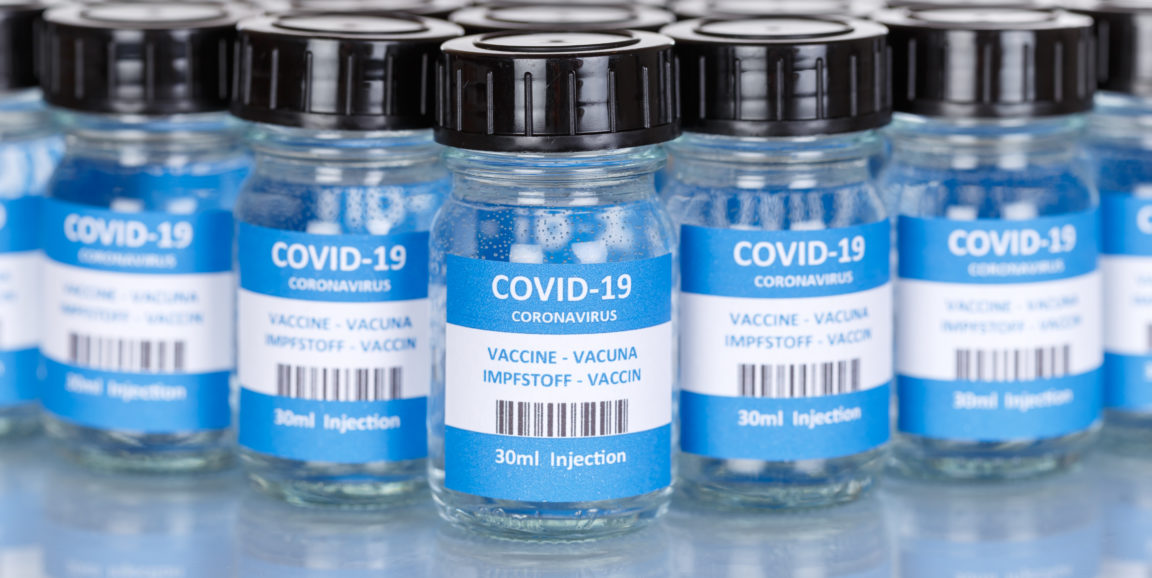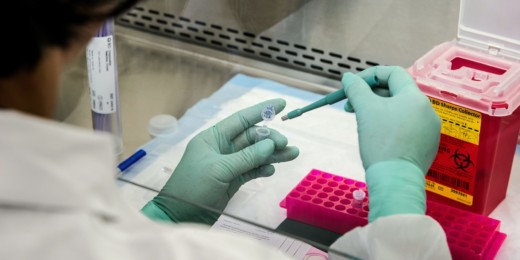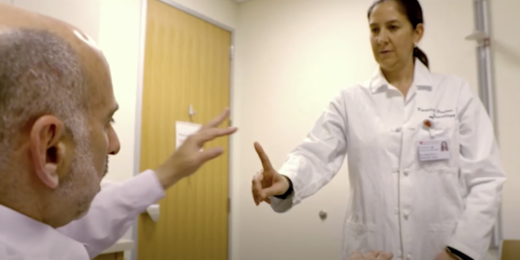What seemed impossible an eyeblink ago is now a reality.
Amazingly, not one but two COVID-19 vaccines -- from Pfizer and Moderna, respectively -- are spilling out of the chute within days of each other. The new vaccines work the same way, but they differ somewhat from the conventional ones that have long protected us from measles, yellow fever, smallpox, polio and many other infectious diseases.
They are the first vaccines ever approved for clinical use that employ an information-coding molecule called RNA to generate an immune response to a microbial pathogen. This is revolutionary because what the immune system responds to is not the RNA, but something the RNA teaches our cells to make.
To understand the new vaccines' magic, consider how older vaccines detect, defang and destroy invading bacterial and viral pathogens.
How conventional vaccines work
At the heart of every vaccine is a component called an antigen -- typically a chunk of a protein that's identical to one borne by the targeted pathogen -- that can excite the immune system to recognize it, then rally and retaliate against it.
When a vaccine dose is shot into your arm, it draws the attention of front-line immune sentinels called dendritic cells, Stanford Medicine vaccine expert Bali Pulendran, PhD, told me. Widely distributed throughout the body's tissues (notably under the skin and in or near muscle tissue), dendritic cells sit around waiting for trouble.
As soon as these dendritic cells sense an antigen, suggesting an invading pathogen is present, they slurp it up, chew it into little pieces, display these tidbits on their surfaces like battle trophies and head for the lymph nodes, the barracks of the immune system.
There, they alert an assemblage of diverse immune-cell types, which launch a coordinated attack on anything possessing features identical to those antigenic battle trophies.
How the new RNA-based COVID-19 vaccines are different
So, how are the new vaccines different? Instead of antigen payloads, they carry copies of the recipe for making the antigen, in the form of RNA, a molecule that stores information.
Figuring out what microenvironment best preserves a protein-based vaccine's antigenicity, then producing it in ultra-pure form for clinical trials, is a slow process. But generating purified RNA molecules that mimic a pathogen's gene is a snap. It took less than a year for an effective vaccine for SARS-CoV-2, the coronavirus that causes COVID-19, to be developed and gain Food and Drug Administration emergency use approval.
Like its close cousin DNA, RNA is a string of chemical units representing, similarly to letters of the alphabet, the genetic code that all living cells use as instructions for producing their component proteins.
The newly licensed COVID-19 vaccines contain myriad identical RNA strands all coding for a critical section of the coronavirus's spike protein. This protein is easy for the immune system to attack because it sits on the virus's outer surface. It's also indispensable to the virus, as it's absolutely required for entry into our cells; so the virus doesn't have the option of altering its spike protein, via mutation, to escape immune detection.
The vaccine's RNA strands are hidden inside of nanoscale fat globules, which keeps our immune systems from flipping out and going all medieval on our tissues. (Your immune system isn't used to seeing RNA floating around outside of cells. When it does, its first hunch is that the out-of-place genetic material belongs to a viral or bacterial pathogen, and it may react aggressively and indiscriminately.)
The primary target for an RNA vaccine, as for traditional vaccines, is dendritic cells, which, Pulendran told me, "love to gobble up nanoscale droplets." They shuttle the RNA-laden fat globules through their outer membranes into the cytoplasm, a cell's factory floor. Once inside, the RNA strands make their way to protein-producing power tools called ribosomes and perch on them.
"The ribosomes decipher the strands' coded instructions and churn out new SARS-CoV-2 spike-protein bits of incomparable purity by the bucketful -- it's like a cellular protein factory," Pulendran said.
Dendritic cells in the vicinity of the shot take up the antigen-coding RNA and can, as a result, produce tons of antigen on their own. This triggers an effect similar to traditional vaccines, in which dendritic cells displaying their antigenic trophies on their surfaces race to the lymph nodes to tip off the immune cells hanging out there.
Dendritic cells' newfound ability to brew up the SARS-CoV-2 antigen they've produced by themselves may result in bits of chewed-up antigen being displayed all the more abundantly on these cells surfaces. This, Pulendran suggested, could boost the immune response -- and could help explain the effectiveness of both RNA-based COVID-19 vaccines.
Some unknowns
Non-immune cells such as those in muscle or nearby fat tissue -- which wouldn't have ingested the antigens contained in traditional vaccines -- can, in principle, take up RNA; but they do so far less efficiently than dendritic cells.
If any non-immune cells in the vicinity were to take up RNA from the COVID-19 vaccine, they, too, would produce the spike protein. And they, too, would chew up a fraction of these newly produced protein pieces into little tidbits and display them on their surfaces for inspection by roving immune cells that survey our tissues for signs of intruders.
This, Pulendran said, could amplify the antigen's exposure to those patrolling inspectors on the lookout for invaded cells -- for instance, in the lung and upper respiratory tract, where SARS-CoV-2 most likes to get a toehold. This would further strengthen the immune response.
Importantly, the genes of cells that ingest vaccine RNA aren't altered. The RNA delivered by a vaccine needs only to get to the cytoplasm, not to penetrate the cell nucleus -- where the genes reside -- to produce antigenic material. Even if the vaccine RNA did get into the nucleus, our cells are unable to convert RNA into the DNA our genes are made of.
Nor can the vaccine RNA molecules taken up by our cells replicate themselves -- our cells contain no capacity to perform that operation.
While the COVID-19 vaccines have been proven effective in preventing severe disease, their ability to block disease transmission remains unknown. But, Pulendran pointed out, that caveat applies to most vaccines we've been routinely using for years.
Another unknown, the durability of immunity the vaccines confer, can only be assessed as the months and years roll by.
The 19th-century poet and philosopher Ralph Waldo Emerson once called the opening volley of the American Revolutionary War "the shot that was heard around the world."
The revolutionary new RNA vaccines may someday be recalled as the shots that cured around the world.
Image by Markus Mainka






